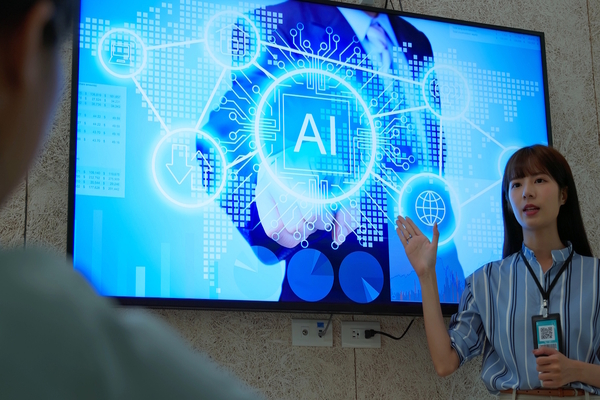Memes, gifs, and emojis: Should they be part of your brand comms?

Julius Colwyn at Space Doctors, part of InSites Consulting, explains how visual assets can enhance brand communications
Gifs, emojis, or memes are all culturally dense communications, they carry intense emotional power, they draw out potent responses with minimal stimulus. They give us quick access and reference to complex, contextual meanings.
For some brands, there’s a lot of room to harness gifs, emojis and memes in external brand communications - but, crucially, any usage of these elements has to fit the brand’s existing tone of voice and personality - and be relevant to its audience.
As with all communications, context is key.
Know your memes
Gifs, memes and emojis act as visual shorthands that carry meaning that transcends the actual clip or image: a popular meme, for instance, might show an image by Colombian painter Fernando Botero, but thanks to the addition of text, even without the slogan it now largely signifies ‘y tho’ - an online trolling response - to many people.
The roots of a meme are important (info is readily available on sites like knowyourmeme.com) However, a screenshot or image from a TV show or of a celebrity can be given a whole new meaning as the internet manipulates and molds it, passing through different perceptions and intentions, so the original source is no longer relevant.
Brands need to take care when using them, since they often have many layers of meaning that vary according to different audiences. Businesses need to ensure that their content creators are immersed in the digital culture around memes, GIFs and emojis and can be aware of where they came from as well as their fluctuating meanings.
Capture a feeling
Memes in particular have an immense power to bring people together: capturing a feeling or emotion in a meme elevates a shared experience.
Brands are learning that – on social media especially – there can be more value and engagement in a meme than a sales-focussed post. Companies like RyanAir, for example, dominate in this space, with TikToks and Tweets that embrace, acknowledge and add humour to some of their well-known shortcomings. Whether positive or negative, people find joy in the recognition of a common feeling.
Other brands have found their own ways to tap into the cultural relevance using gifs. Last year, Spotify launched a partnership with Giphy, a popular gif search engine, to help users find new music through gifs of their favourite artists, while mediation and wellness brands like Calm and Headspace have leaned into creating their own shareable gif assets.
It’s also crucial to remember that new modes of memeification are emerging all the time, eg. TikTok’s use of sound as well as language/visuals. Brands should be aware of these trending sounds or lyrics that are taking up space in culture and utilise opportunities to lean in to those that work for them.
Take the speed of culture into account
Given the speed of cultural change today, maintaining relevance requires engaging in new channels, and using the types of communication that work there. But engaging in them for the sake of it can fall flat, building neither relevance or engagement.
We have seen multi-national, powerful brands, rich in cultural meaning become just another indistinct voice in a global conversation, reposting a tired gif, creating an intimacy that doesn’t resonate with an emoji, or conveying a humour that jars with how they are perceived. Ineffective at best, damaging at worst.
Social media is an incredibly fast cultural space – when brands step into it, they open themselves up in ways that can be incredibly useful, but could also set themselves up for failure since once things are put into that sphere, the brand cedes control over to the audience.
As a brand, when you step into the space of memes/gifs/emojis, it can propel you straight to the heart of cultural relevance, or it can immediately mark you as being out of touch, not in on the joke. The flow of it moves in a way that can quickly carry you far from where you intended to go.
Tracking and understanding how culture changes – and how the speed of chance differs across mediums – is key to maintaining brand relevance, but the churn of culture moves at different speeds in different mediums. A brand campaign can be lovingly crafted, each asset carefully chosen, the framing and language shaped to align with positioning.
But compared with fast culture it travels slowly, and the time taken to prepare it means it can miss the connection points to those key cultural moments that can supercharge the cultural relevance of a brand.
Co-create your brand
Ultimately, when it comes to using visual assets like memes, emojis, and gifs in your brand communications, the real challenge is to understand how, when and if you should play with forces beyond your direct control. If you shape the right creative strategy, if you understand your equities and meanings as a brand at a cultural level, then you can control what’s important.
To authentically engage in this space is a careful balance of permanence and transience. It requires understanding what about your brand must stay the same and the elements where you can flex depending on the context, that you can allow to be shaped by the people that share, edit and adapt the memes you put out into the world.
This is the domain of living culture, where the future of brands is co-authored with their customers, and there is nowhere more powerful when it comes to bringing your cultural relevance to life.
Julius Colwyn is Associate Director at Space Doctors, a global cultural and creative consultancy fuelled by the very best of semiotics, cultural insight and analytics, part of InSites Consulting. A certified B Corporation, they help organisations become more impactful, meaningful, and relevant by connecting them more deeply with culture. Visit space-doctors.com/ for more information.
Main image courtesy of iStockPhoto.com

Business Reporter Team
Most Viewed
Winston House, 3rd Floor, Units 306-309, 2-4 Dollis Park, London, N3 1HF
23-29 Hendon Lane, London, N3 1RT
020 8349 4363
© 2025, Lyonsdown Limited. Business Reporter® is a registered trademark of Lyonsdown Ltd. VAT registration number: 830519543





